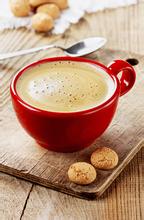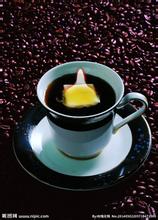Cuban crystal coffee with even taste introduces fine coffee.
Cuba is an island of the Caribbean, and its whole territory is in the international coffee belt. The province of Santiago, Cuba's most important coffee producer, is no more than 200 kilometers away from Jamaica. In 1748, a French colonist named JoseAntonioGelabert began to grow coffee in Cuba. Soon, it became popular to enslave slaves in this land to grow coffee on a large scale. For more than a hundred years, it goes without saying how many bloodshed and tragedies. In the 19th century, Cuba became the world's leading coffee producer, and Cubans have been linked to coffee ever since. Cubans today, whether descendants of colonists or descendants of former slaves, get up early every day and do the first thing to make coffee. There is also a love story about Cuban coffee. In the early 19th century, a French colonist named ConstantinRousseau, who grew coffee in Haiti, fled to Cuba because of the country's massive slave uprising. After arriving in Cuba, he returned to his old job and set up a coffee garden in the GranPiedra area of Santiago province. This guy has 30 slaves, including a beautiful female slave named MariaIsabel. The French master fell madly in love with the slave girl. He first accepted her as a mistress, and then did not hesitate to condescend to marry her, which shows that her beauty has been invincible and powerful since ancient times. The Frenchman, who fell in love and married a slave, gave his coffee garden a romantic large LaIsabelica in the name of a female slave. Few countries like Cuba have won the favor of generations of Chinese. I believe that there are many old people, hear that sad and euphemistic song: "Beautiful Havana, there is my home, the bright sun shines on the new house, and there are red flowers in front of the door …" . "there will be ripples in my heart and even tears in my eyes. And those lovely post-80s and post-90s young countrymen may not know Khrushchev and Kennedy, but few do not know Fidel. Castro and Che. Guevara. If you are a smoker among the petty bourgeoisie and don't know there are Cuban cigars, you'd better keep quiet so as not to lose face in front of your friends. During the holiday, New Year's Day took a boat from Hong Kong to Macao and accidentally found a Cuban product store in the Shun Tak Center. The shop is not big, except for the dazzling array of Cuban cigars, the most eye-catching thing is Cuban coffee. I picked up a bag of 1kg net Cubita coffee beans and pressed it on the edge of the breather valve on the bag, and the aroma of coffee came to my nostrils. What a good thing! The first thing to do when you get home is to turn on the machine to make coffee. Oh, this Cuban coffee, no wonder some cunning businessmen use it to pass it off as Jamaican Blue Mountain Coffee! Before I bought this bag of Cuban coffee, I only ate Cuban sugar and smoked Cuban cigars. It was in vain to be a self-proclaimed coffee addict. I didn't even notice that there were such beautiful things in the coffee family before. On second thought, isn't Cuba a country that sounds familiar to most people, but little is known on closer inspection? Like it or hate it, an island of thousands and thousands of people has left the world's number one power close at hand helpless for more than half a century. This country is really awesome.

Important Notice :
前街咖啡 FrontStreet Coffee has moved to new addredd:
FrontStreet Coffee Address: 315,Donghua East Road,GuangZhou
Tel:020 38364473
- Prev

The unusually fruity Hawaiian Kona coffee introduces fine coffee.
Although Hawaii is often affected by tornadoes, the climatic conditions are very suitable for the coffee industry. There is plenty of rain and sunshine here, and there is no worry of frost. In addition, there is a strange natural phenomenon called free shade (freeshade). On most days, at about two o'clock in the afternoon, white clouds appear in the sky for coffee trees
- Next

Cuban crystal coffee with even taste introduces fine coffee.
Cuba is an island of the Caribbean, and its whole territory is in the international coffee belt. The province of Santiago, Cuba's most important coffee producer, is no more than 200 kilometers away from Jamaica. In 1748, a French colonist named JoseAntonioGelabert began to grow coffee in Cuba. Soon, it became popular to enslave slaves in this land to grow coffee on a large scale. For more than a hundred years
Related
- Does Rose Summer choose Blue, Green or Red? Detailed explanation of Rose Summer Coffee plots and Classification in Panamanian Jade Manor
- What is the difference between the origin, producing area, processing plant, cooperative and manor of coffee beans?
- How fine does the espresso powder fit? how to grind the espresso?
- Sca coffee roasting degree color card coffee roasting degree 8 roasting color values what do you mean?
- The practice of lattes: how to make lattes at home
- Introduction to Indonesian Fine Coffee beans-- Java Coffee producing area of Indonesian Arabica Coffee
- How much will the flavor of light and medium roasted rose summer be expressed? What baking level is rose summer suitable for?
- Introduction to the characteristics of washing, sun-drying or wet-planing coffee commonly used in Mantenin, Indonesia
- Price characteristics of Arabica Coffee Bean Starbucks introduction to Manning Coffee Bean Taste producing area Variety Manor
- What is the authentic Yega flavor? What are the flavor characteristics of the really excellent Yejasuffi coffee beans?

